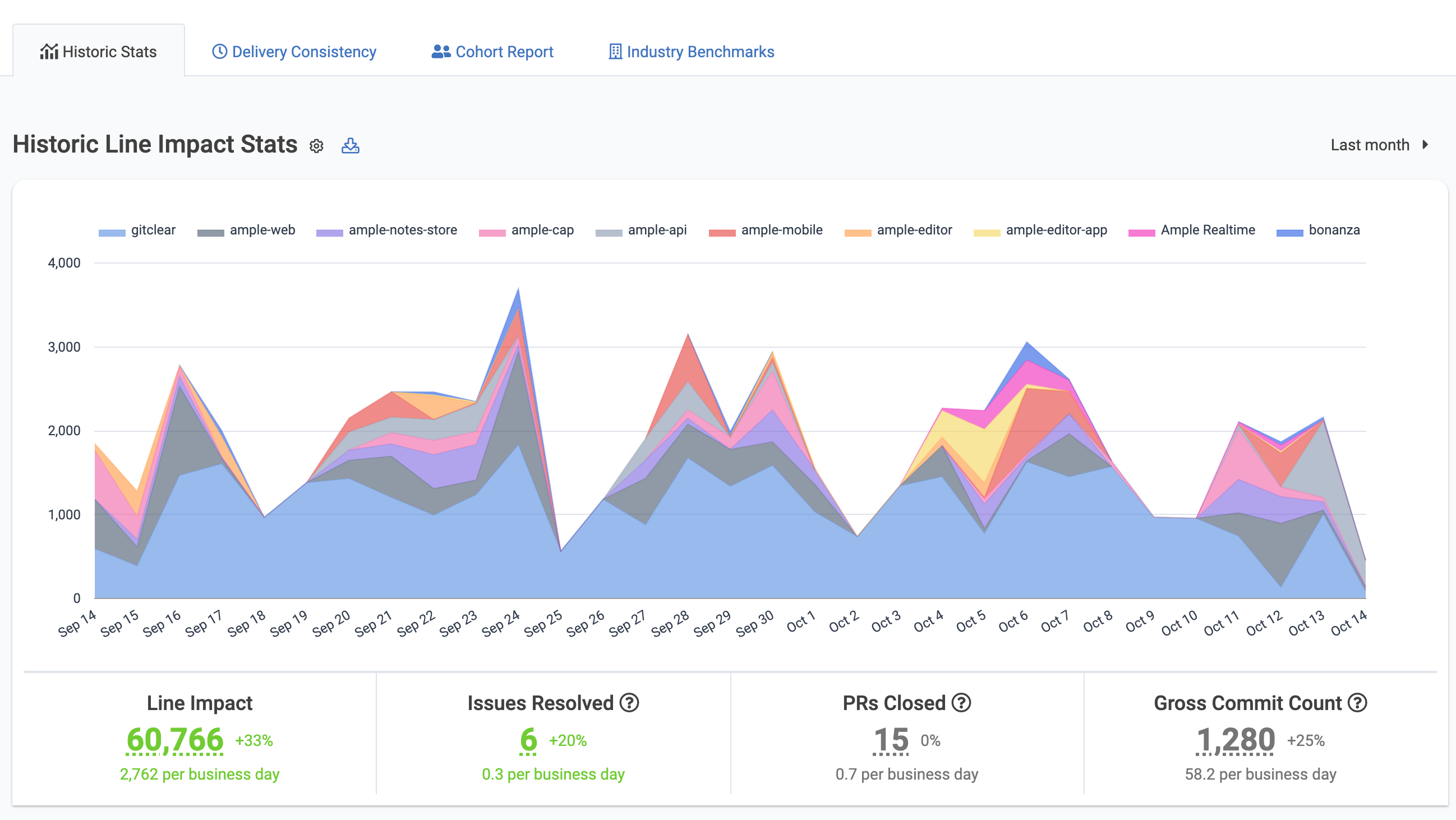The Delivery Velocity tab is the best report to build a sense for how the company's long-term fortunes are unfolding. As will be shown below, this elements on this page offer clarity as to whether the team's velocity is growing or shrinking over time.
As with most all pages on GitClear, this page can be setup to filter on any combination of:
Time range
Repo
Organization
Committer
Team
linkDelivery Velocity Stats
The first graph shown on the page is called "Historic Diff Delta Stats," and by default it shows how Diff Delta per repo or per team is changing over time:
Historic Diff Delta Stats graph showing how much Diff Delta has accrued to 10 different repos during the past year
Hover over any data point to get a more detailed breakdown:
Hover on a data point in the Stats Historical Graph to get a detailed breakdown of its constituents
You can also use the download icon to the right of the graph's title to download all of this data into a CSV file.
linkCode Breakdown Graphs
Aside from the main Diff Delta graph featured upon clicking into the Historical Stats page, there are three more graphs available to Pro subscribers:
Code Breakdown graphs allow exploring code progress based on various dimensions. Click the chart title to have the Code Breakdown graph promoted to become the featured graph on the page
Breakdown by Provenance. Indicates the length of time since the code was last modified in a meaningful way. Strong teams ensure that they get a mix of adding new code and revising or removing old code
Breakdown by Operation. Includes Added, Updated, Deleted, Find Replaced
Breakdown by Code Domain. The category of code that was impacted. These values change based on your Code Categories.
By clicking on the title of any chart from the "Code Breakdown" section, that chart will be promoted to the featured graph on the page. This will make the chart 3x larger and increase the number of segments from 5 to 10. It will also avail the detailed tooltips shown in the section above.


